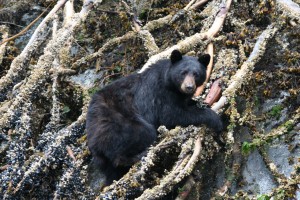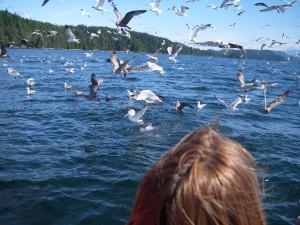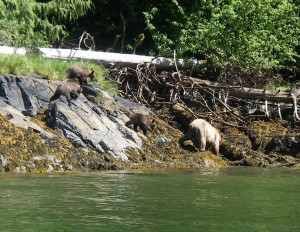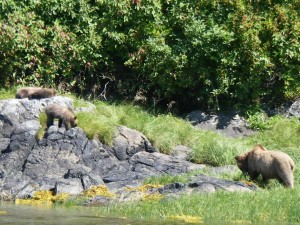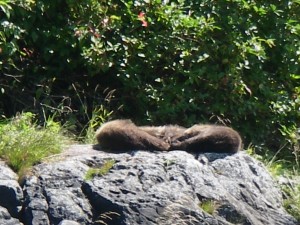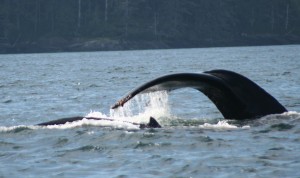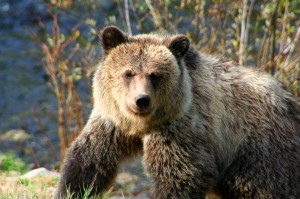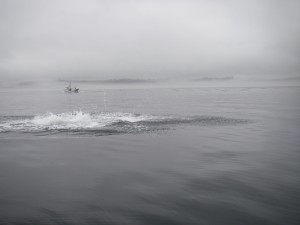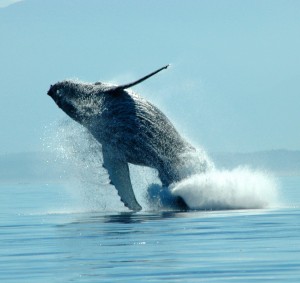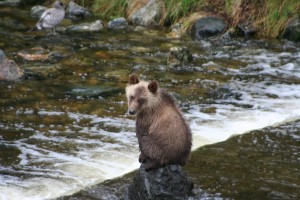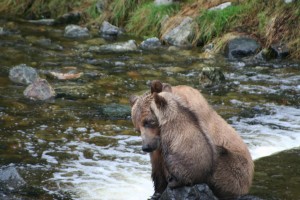Mussels and barnacles are a staple source of protein for black bears along the British Columbia coast. On grizzly bear tours, whale watching trips or the evening wildlife tour from the lodge black bears are often on the beach at low tide. This bear has found an ideal location that allows it to scrape the branches of this tree to eat the mussels and barnacles. Extreme low tides always bring more bears to the beach because the parts of the beach that are exposed at these tides offer a source of food rarely available.
